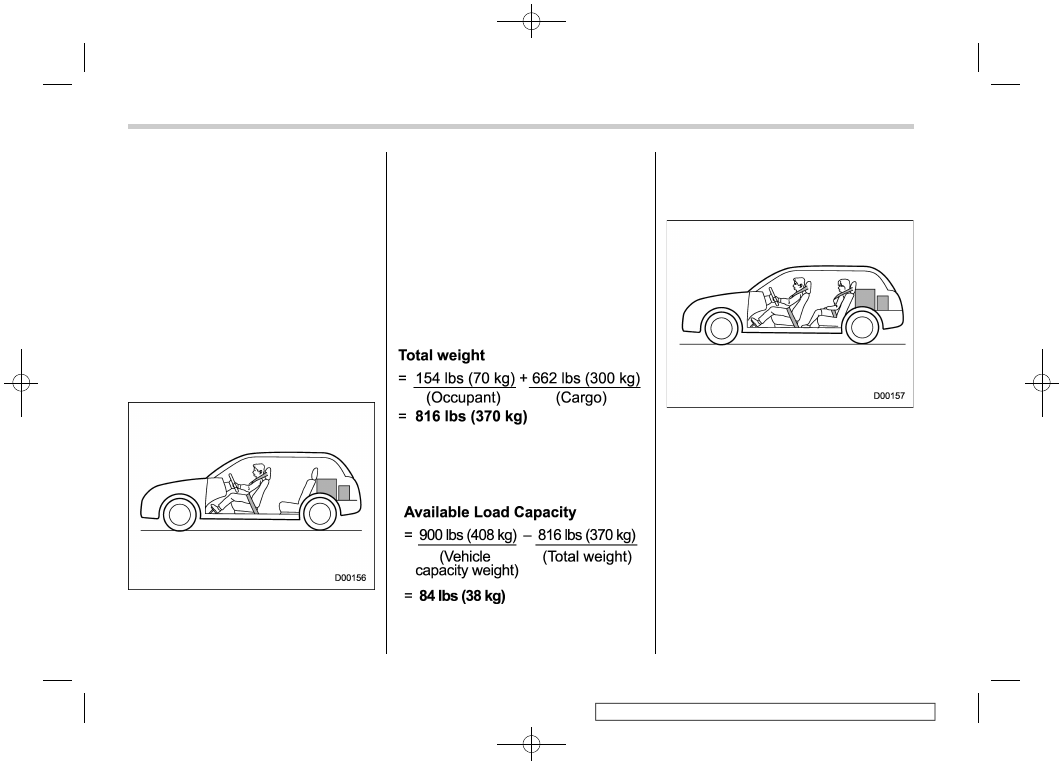Subaru Forester (2019). Instruction - part 62

(518,1)
of optional equipment + tongue load
of a trailer (if applicable))
For information about vehicle load-
ing, refer to “
&
Calculating total and load
capacities varying seating
configurations
Calculate the available load capa-
city as shown in the following
examples:
Example 1A
Vehicle capacity weight of the ve-
hicle is 900 lbs (408 kg), which is
indicated on the vehicle placard
with the statement “The combined
weight of occupants and cargo
should never exceed 900 lbs or
408 kg”.
For example, if the vehicle has one
occupant weighing 154 lbs (70 kg)
plus cargo weighing 662 lbs (300
kg).
1.
Calculate the total weight.
2.
Calculate the available load ca-
pacity by subtracting the total
weight from the vehicle capacity
weight of 900 lbs (408 kg).
3.
The result of step 2 shows that a
further 84 lbs (38 kg) of cargo can
be carried.
Example 1B
For example, if a person weighing
176 lbs (80 kg) now enters the same
vehicle (bringing the number of
occupants to two), the calculations
are as follows.
1.
Calculate the total weight.
Vehicle load limit – how to determine
516